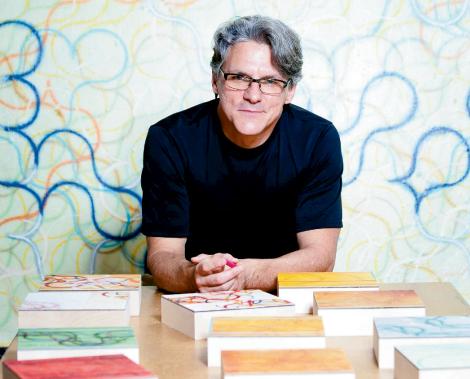Depth Perception
WNC Magazine
Depth Perception. The many dimensions of Kenn Kotara reveal order amid chaos.
Article by Caroll Leggett, Photography by Jennifer Haynes

http://wncmagazine.com/feature/depth_perception
Abstract artist Kenn Kotara had a difficult time finding his path. “I started drawing as a child, and it always was a passion for me. But my father was very pragmatic,” recalls the Asheville artist. “He thought I should have a profession, a nine-to-five job that paid well.” After a short stint studying architecture, Kotara took his first drawing class at 28 and emerged with a master’s in fine arts from Louisiana Tech University.
Kotara wasn’t happy until painting became his sole occupation. Today at age 52, his home studio is tidy, and he describes his art as “making orderly systems out of chaos while I create in phases and categories.”
The category that makes up his largest body of work involves curvilinear lines that seem random, spontaneous, and even aimless. However, every twist and turn is calculated. He begins each painting by creating a grid on the canvas and using the same dimensions for each circle. Kotara creates with a continuous awareness of positive and negative space, believing that empty space is important to composition.
Given the artist’s desire to work with pencils, ink, charcoal, pastels, oil pastels, acrylic, and oil paints on canvas, paper, and Mylar, he is wed to no one medium. “I have many temperaments,” he says, “and the fact that my work tends to fall into categories is illustrative of that. I move from one to the other as my inner need requires.”
A fan of transcendentalist Henry David Thoreau, Kotara read On Walden Pond and then created artwork on paper for each of the 18 chapters. Each is comprised of two stacked color panels imprinted with braille.
These braille pieces reveal the thoughtful, multidimensional side of Kotara who has deep frustrations concerning the U.S. social and political systems. He chooses words and phrases from documents that are fundamental to the American political experience, such as the Magna Carta, and from the writings of persons he admires, such as Thoreau and Martin Luther King Jr.
“I create on my own terms, and I love the moment of discovery when a viewer looks at something I have created and connects with it,” muses Kotara. “In my opinion, a good piece of art keeps you coming back for more.”
On View
Kotara is represented by Gallery Minerva in Asheville, Flanders Gallery in Raleigh, and Sandler Hudson Gallery in Atlanta.
www.kotarastudio.com

